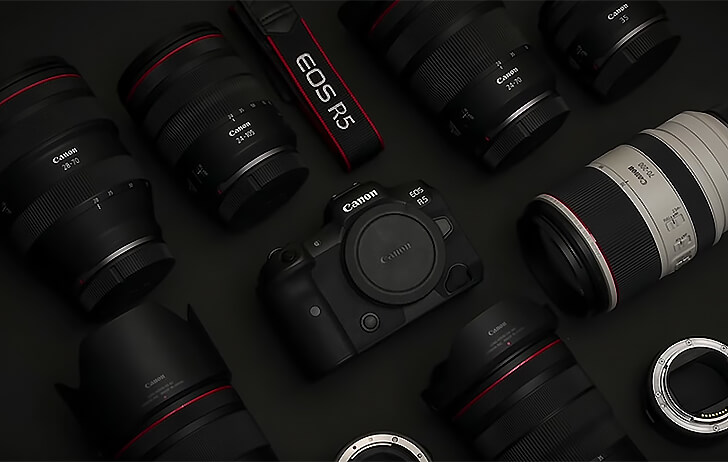The Canon EOS R5 will finally be officially announced in July, and there are still likely a few surprises in store for us.
Below is a reminder of the known and rumored specifications for the Canon EOS R5.
Canon EOS R5 Specifications:
- 44.7/45mp full-frame CMOS sensor
- 5-axis in-body stabilization
- 5 stops with IBIS alone
- 7-8 stops of correction when used with in-lens stabilization
- 12fps mechanical, 20fps electronic
- 4K @ 120fps
- 4K @ 60fps
- Built-in 5GHz WiFi
- 8K RAW internal video recording up to 29.97 fps
- 8K internal video recording up to 29.97 fps in 4:2:2 10-bit Canon Log (H.265)/4:2:2 10-bit HDR PQ (H.265).
- 4K internal video recording up to 119.88 fps in 4:2:2 10-bit Canon Log (H.265)/4:2:2 10-bit HDR PQ (H.265). 4K external recording is also available up to 59.94 fps.
- No crop 8K and 4K video capture using the full-width of the sensor.*
- Dual Pixel CMOS AF available in all 8K and 4K recording modes.
- Canon Log available in 8K and 4K internal recording modes.
- A Canon first, the EOS R5 will feature 5-axis In-Body Image Stabilization, which works in conjunction with Optical IS equipped with many of the RF and EF lenses.
- Dual-card slots: 1x CFexpress and 1x SD UHS-II.
- New battery, but the same shape and compatibility with the EOS 5D Mark IV
- Launching in July 2020
Some of our articles may include affiliate links. If you purchase through these links, we may earn an affiliate commission at no extra cost to you.


Dual Pixel RAW availability in R5 has not been rumoured so far. Or has it?
A question as to it being used to boost DR has been asked, it seems unlikely this time around.
Or, they could instead just allow long multiple exposures to add up into a 24(or so) bit per pixel element raw image. Then software in camera could produce a normal jpg (or heif) file for display and also save the super high resolution raw file for the user to work with in post. :geek:
Good question.
I'd predict no at 20fps and yes at 12fps.
It's helpful to look at what the 1DXiii is capable of video-wise as this is probably the bigger bottleneck in terms of card data writing:
5.5k 12-bit raw @ 60fps. The frame is 5472*2286 -> 1073MB/s
Canon hasn't confirmed the bit depth of the R5 raw video - we just know it's 8kDCI (8192x4320) and 29.97fps. Let's look at how many pixels/second each camera is pushing in raw video at their highest frame rates:
1DXiii: 750,539,520 pixels/s
R5: 1,060,621,516.8 pixels/s
So, the R5 is pushing 41% more pixels in raw video over the same CFexpress interface at its peak frame rate compared to the 1DXiii at its peak frame rate, so I'd guess Canon will be nerfing the bit depth a bit compared to the 1DXiii. At 8bits, the data rates at the highest frame rates are very close (So, I'd predict the R5 has 8 bit raw video, at least at it's highest frame rate. At 23.98 fps it could conceivably fit in the 1GB/s envelope at 10 bit although I kind of doubt that Canon would go to that sort of trouble)
Now onto images:
raw image files will be a full 8192x5262 (3:2) pixels.
If those are 14bit, 20fps yields a data rate of 1494 MB/s - a bit higher than the data rates we see in the 1DXiii and enough so that I doubt the CFexpress interface could keep up (especially not with cards that are available today). At 12fps, the data rate drops down to 896 MB/s which is in the envelope of what the 1DXiii can manage.
So with mechanical shutter you're probably never going to fill the buffer. With electronic shutter, you'll start off with a 20fps burst and then drop to 14 fps or so once the buffer is saturated - which is still pretty respectable.
If you want to shoot this way, you should probably be saving up for CFexpress cards as much as you're saving up for the camera.
Also - this totally ignores the UHS-II SD card which is much slower.